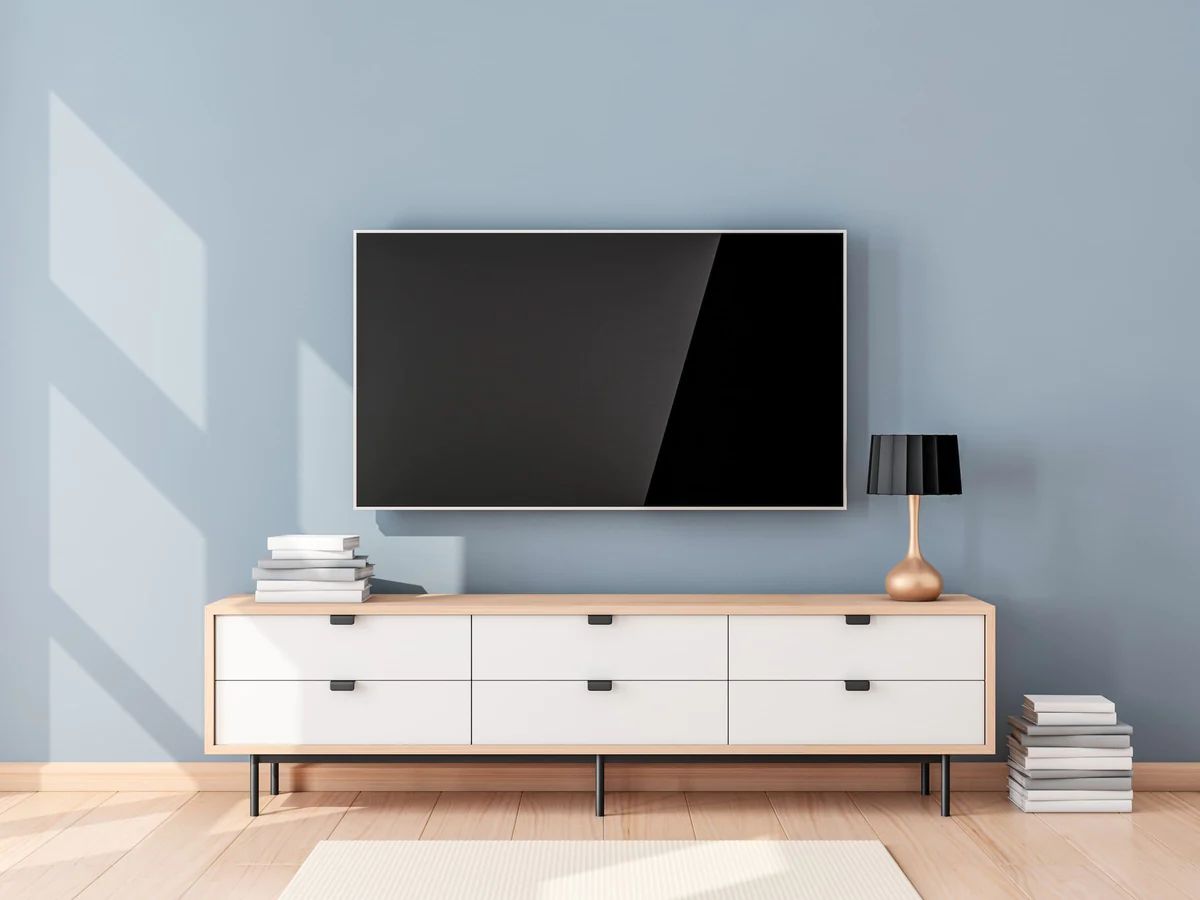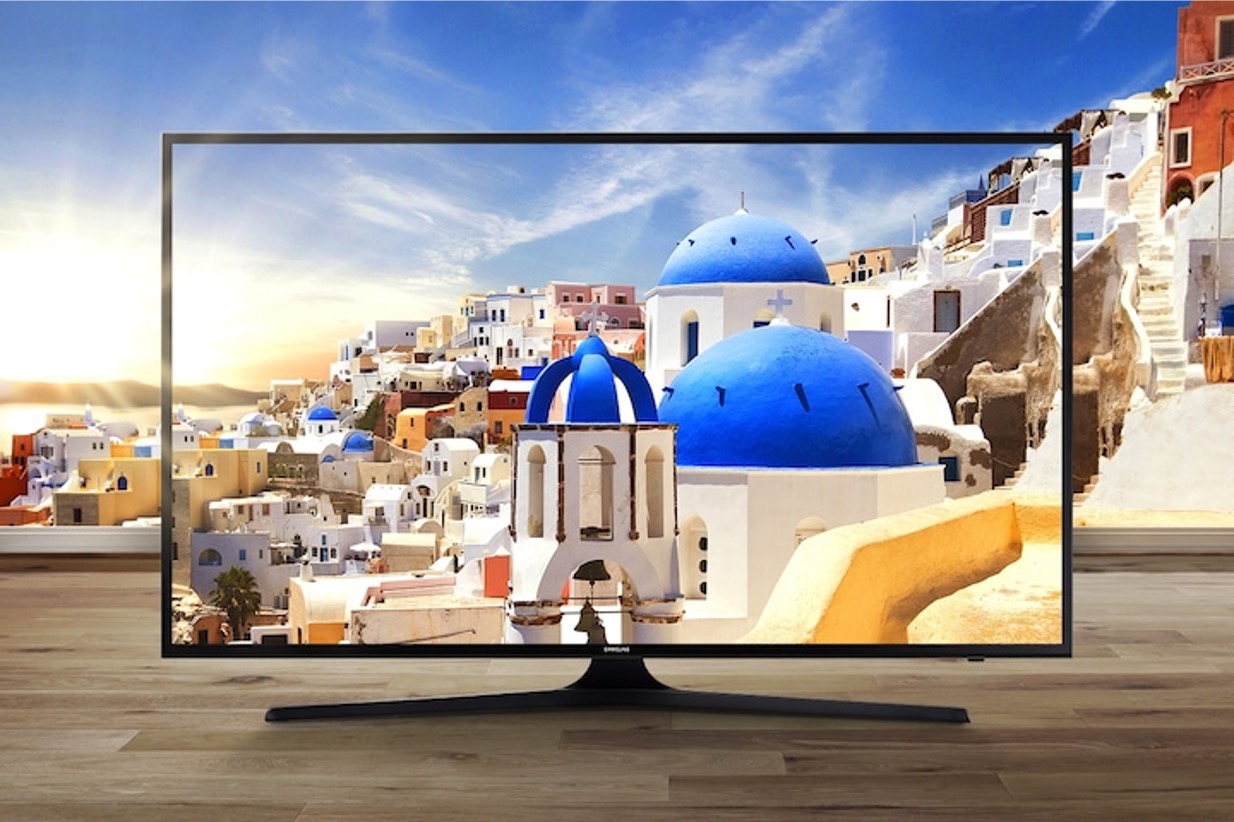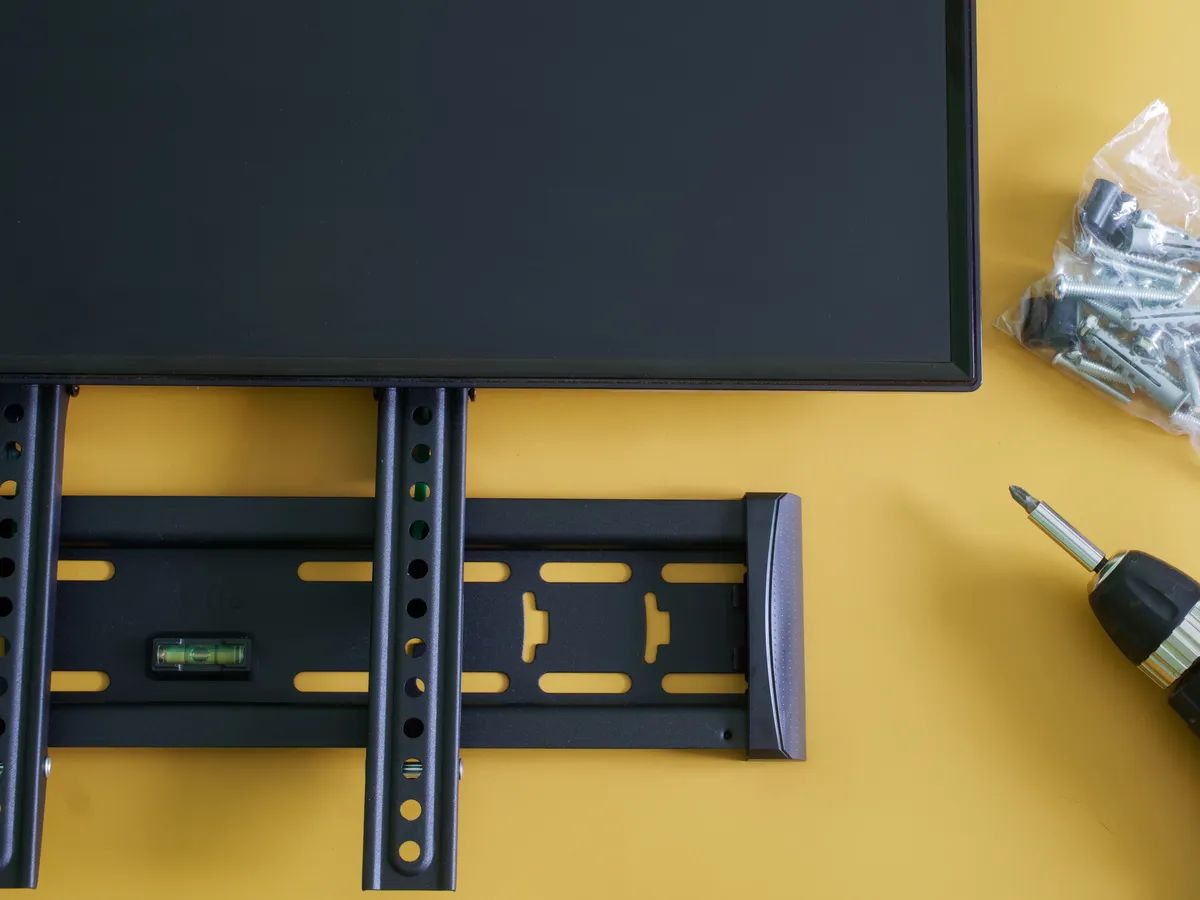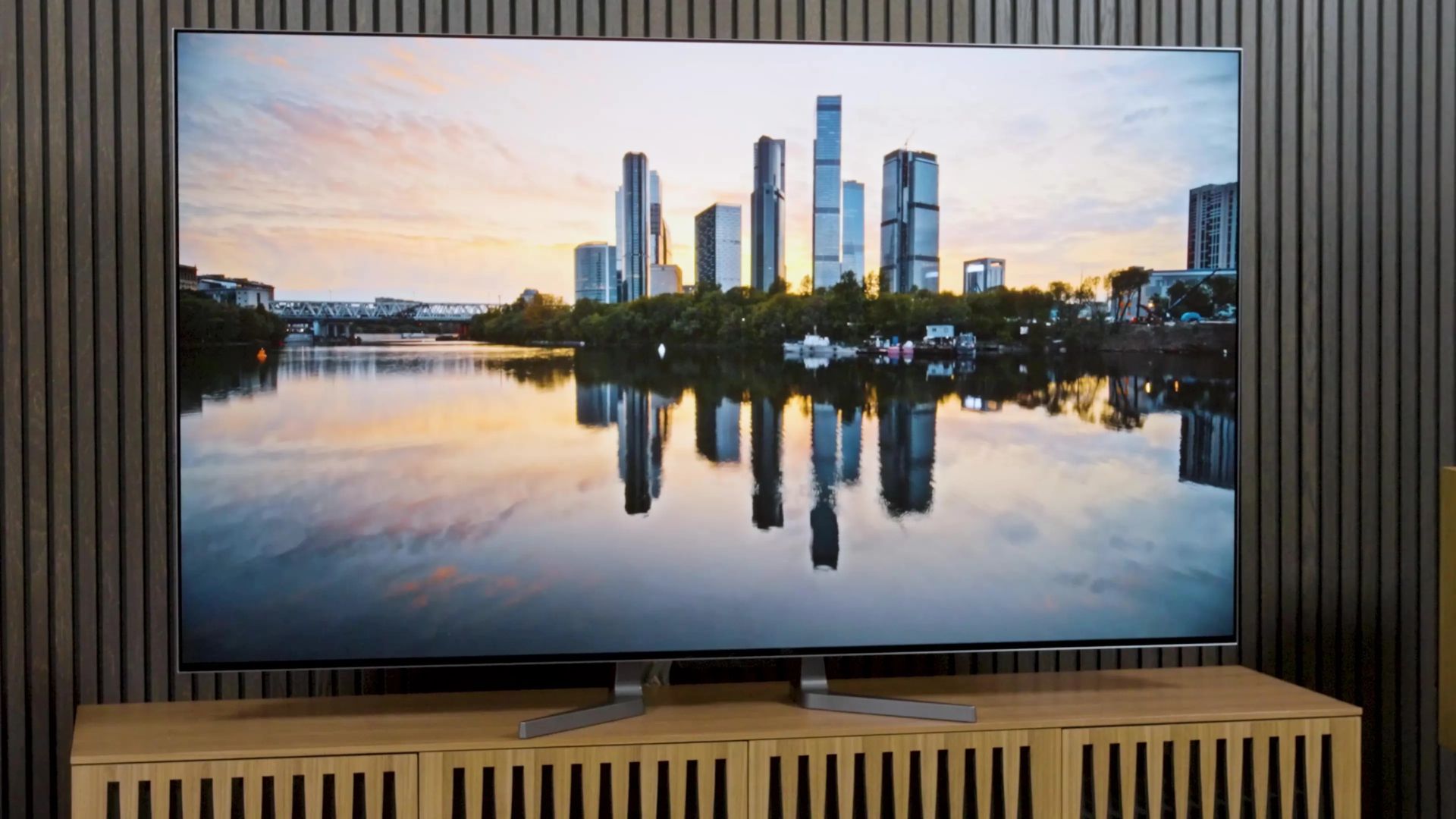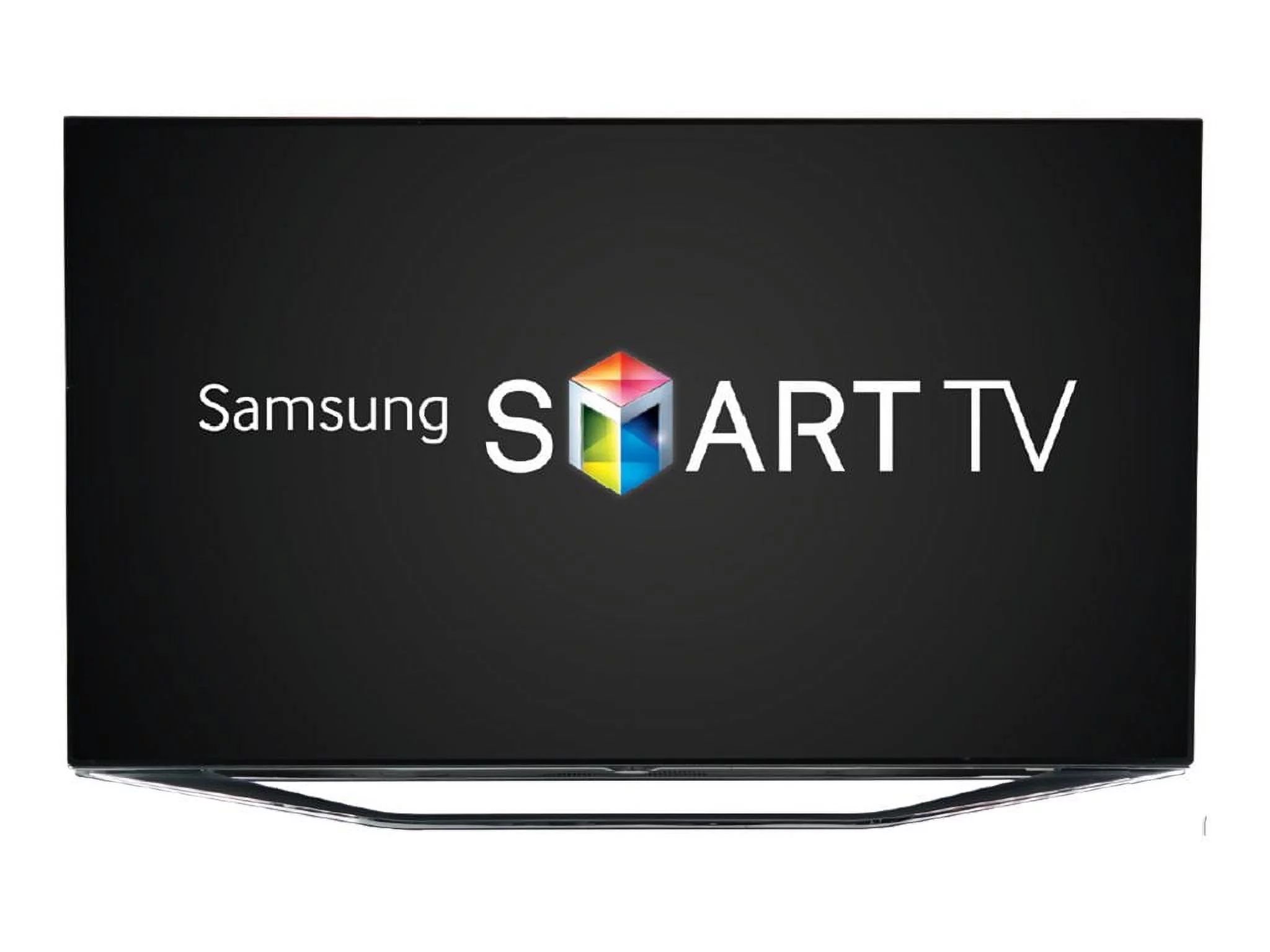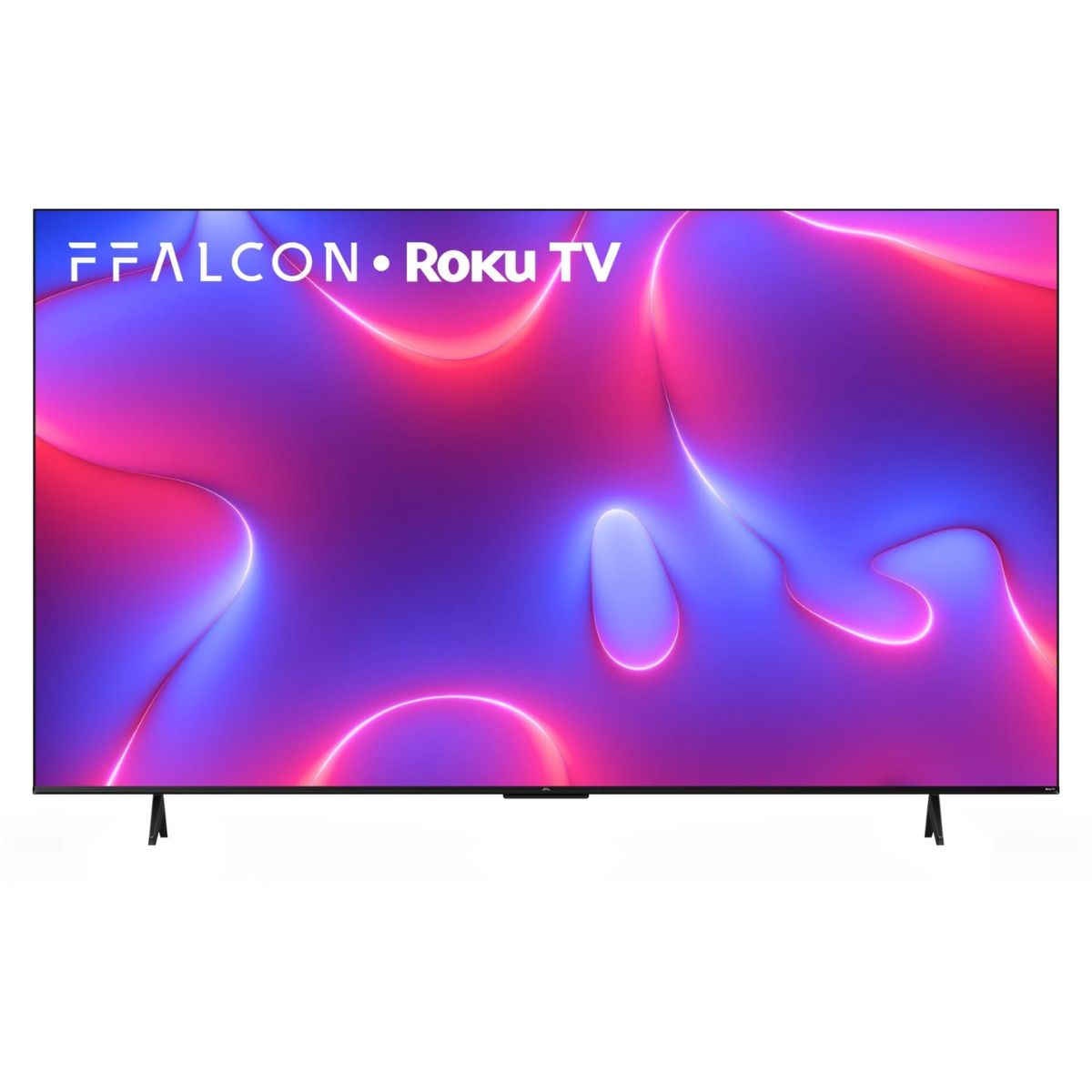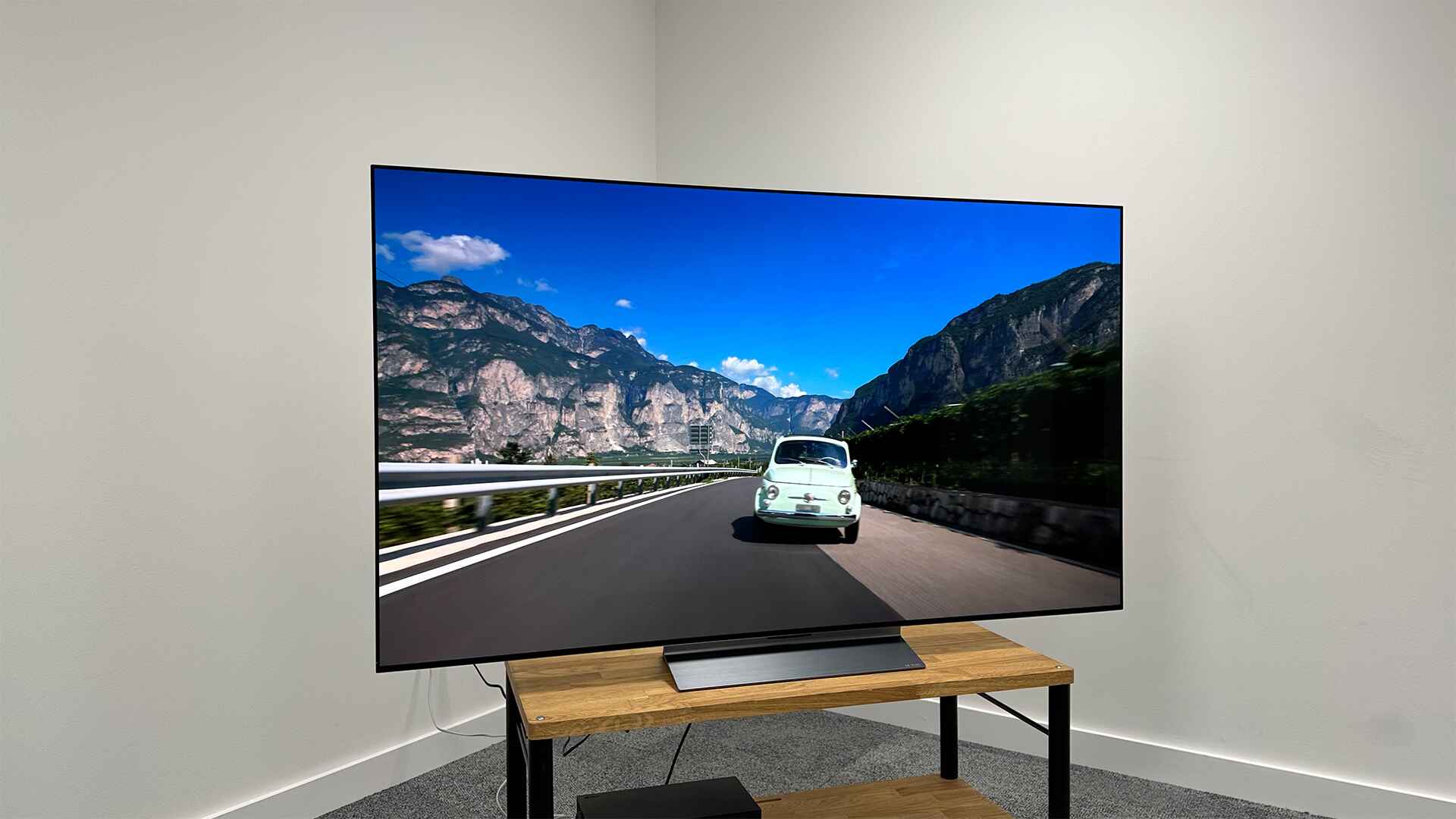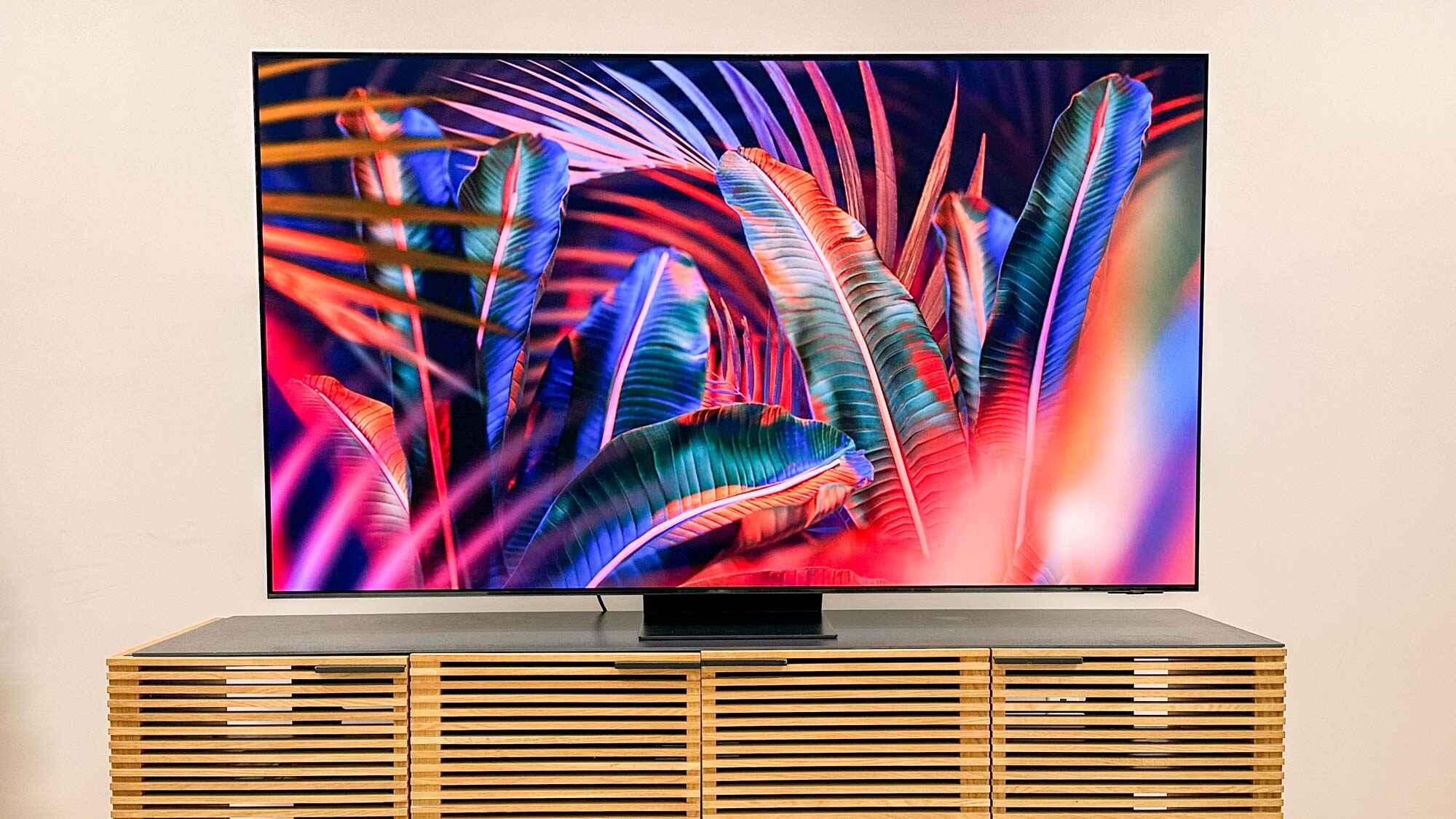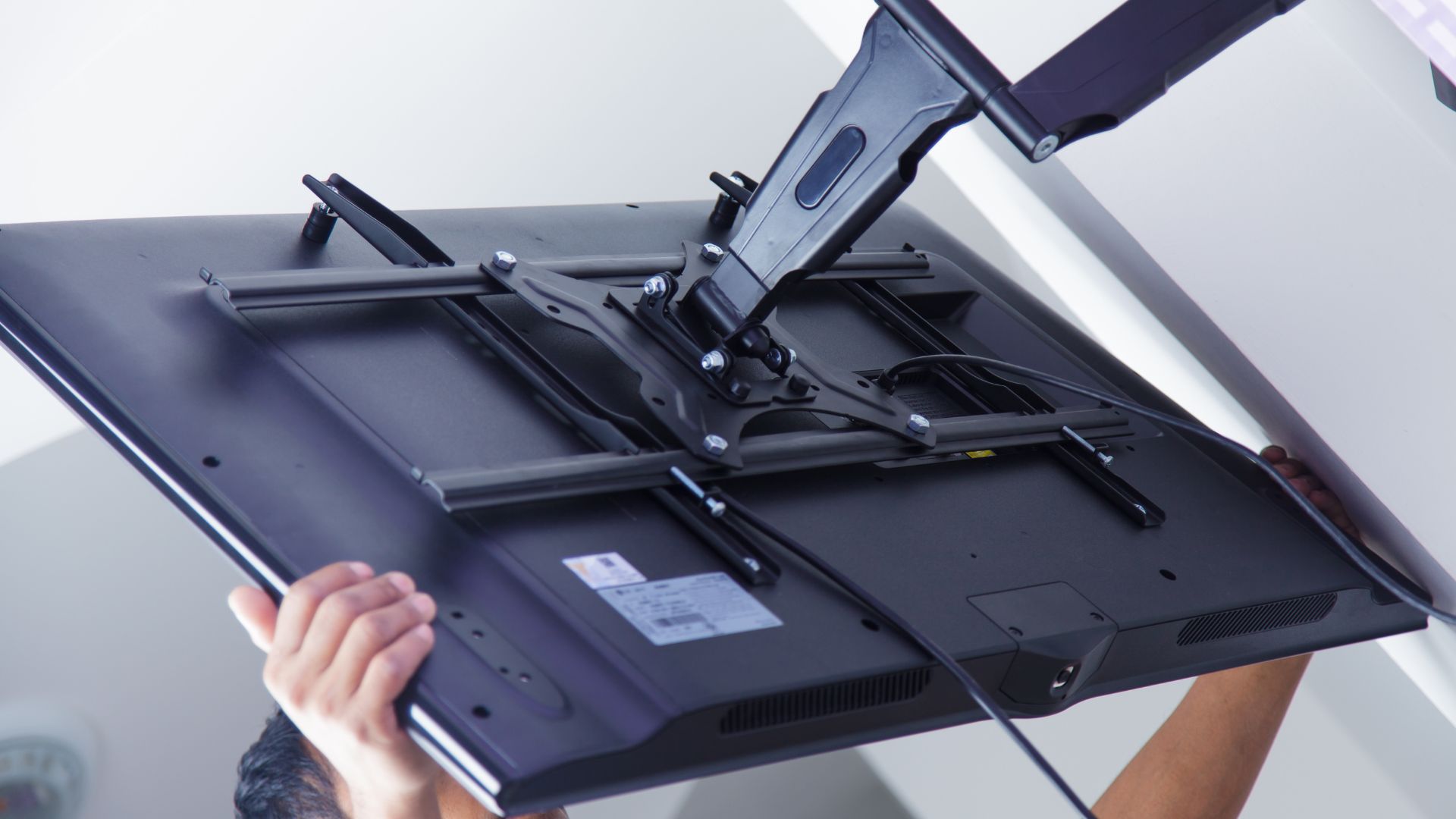Introduction
Mounting a LED TV on the wall is a popular choice for homeowners who want to create a sleek and modern look in their living space. Not only does it save space, but it also offers better viewing angles and reduces the clutter of TV stands and wires. However, determining the right height for mounting your TV is crucial to ensure optimal comfort and viewing experience.
Before you grab the tools and start mounting your TV on the wall, there are certain factors to consider. The size of your TV, the height of your seating area, the layout of the room, and personal preferences all play a role in determining the ideal height for mounting. This article will guide you through the process of finding the perfect height for your LED TV and provide tips for mounting in specific rooms.
Whether you’re a movie enthusiast who wants an immersive experience or a gamer who requires a comfortable viewing angle, understanding the various options for TV placement is essential. So, let’s explore the factors to consider before mounting your LED TV and delve into the details of eye-level mounting, mounting above eye level, and mounting below eye level.
Factors to Consider Before Mounting
Before you start the process of mounting your LED TV, there are a few key factors to consider to ensure the best possible viewing experience. Taking these factors into account will help you determine the ideal height and placement of your TV on the wall.
First, consider the size of your TV. The larger the TV, the higher you’ll need to mount it to ensure comfortable viewing. If you have a small TV, mounting it too high may strain your neck, while mounting a large TV too low can cause discomfort and strain on your eyes. It’s important to strike a balance between the size of your TV and the viewing distance.
Next, think about the height of your seating area. Ideally, your TV should be mounted at eye level when you are seated in your usual viewing position. This helps reduce strain on your neck and provides a comfortable viewing experience. Measure the height of your seating area and use this as a reference point for determining the height of your TV.
The layout of the room is another important factor to consider. Take into account the furniture placement, the position of windows, and any other obstacles that may affect the visibility of the TV. You want to ensure that the TV is mounted in a central location where it can be easily viewed from different seating areas without any obstructions.
Personal preference should also play a role in your decision-making process. Consider your own viewing habits and preferences. Do you prefer a more immersive experience and want to feel like you’re in a movie theater? In that case, you may opt for a lower mounting height. If you prefer a more relaxed viewing experience, a higher mounting height may be suitable.
Keeping these factors in mind will help you determine the best height and placement for your TV. Remember, it’s not just about aesthetics but also about ensuring a comfortable and enjoyable viewing experience for yourself and your family or guests.
The Ideal Height for Mounting
When it comes to mounting your LED TV on the wall, finding the ideal height is essential for a comfortable and immersive viewing experience. While personal preference and specific room layouts may vary, there are general guidelines that can help you determine the optimal height for your TV.
For eye-level mounting, the center of the TV screen should be at eye level when you are seated in your usual viewing position. This ensures that you don’t have to strain your neck or tilt your head upwards or downwards while watching your favorite shows or movies. Measure the height of your seating area and use that as a reference point for mounting your TV.
If you prefer a more cinematic experience or have a large seating area, you may consider mounting your TV slightly above eye level. This can create a more immersive viewing experience, similar to what you would have in a movie theater. However, be cautious not to mount it too high, as it can strain your neck and lead to discomfort during extended viewing sessions.
On the other hand, if you have a higher seating area or if you like to watch TV while lying down, mounting the TV below eye level may be more comfortable. This allows for a better angle when viewed from a reclined position and reduces strain on your neck. However, keep in mind that mounting the TV too low may result in a less optimal viewing experience for those who are seated upright.
Keep in mind that these are general guidelines, and personal preference may play a significant role in deciding the ideal height for your TV. Consider the size of your TV, the height of your seating area, and your preferred viewing experience when determining the mounting height.
Another important aspect to consider is the viewing angle. Ideally, the TV should be positioned at a slight downward angle, pointing towards the viewers. This helps reduce reflections and glare from surrounding lights or windows, providing a clearer and more enjoyable picture.
By considering these factors and finding the right balance between eye-level mounting and personal preferences, you can achieve the optimal TV height for an immersive and comfortable viewing experience.
Eye-Level Mounting
Eye-level mounting is a popular choice for many homeowners as it offers a comfortable and natural viewing experience. When your TV is mounted at eye level, the center of the screen should be aligned with your eye level when you are seated in your usual viewing position. This ensures that you can watch your favorite shows or movies without straining your neck or tilting your head upwards or downwards.
Eye-level mounting is especially ideal for living rooms or entertainment areas where the primary seating is upright, such as sofas or armchairs. By positioning the TV at eye level, you create a comfortable and ergonomic setup that allows everyone in the room to have an unobstructed view of the screen.
To achieve eye-level mounting, start by measuring the height of your seating area. This will serve as a reference point for determining the mounting height. From there, you can adjust the TV mount to position the center of the screen at your eye level when you are seated.
Keep in mind that the specific height for eye-level mounting will vary depending on factors such as the size of your TV, the seating arrangement, and personal preferences. As a general rule, the bottom edge of the TV should be at least 42 inches from the floor to achieve a comfortable eye-level viewing experience.
While eye-level mounting provides a great viewing experience for most situations, it may not be suitable for every room or seating arrangement. Some factors to consider include the height and angle of windows, the placement of furniture, and any other potential obstructions in the room that may affect the visibility of the TV. Ensure that the TV is positioned in a central location where everyone in the room can comfortably view it without any hindrances.
By opting for eye-level mounting, you can create a harmonious and visually appealing setup that enhances your viewing pleasure. It offers a natural and ergonomic viewing experience, allowing you to enjoy your favorite content comfortably for hours on end.
Mounting Above Eye Level
Mounting your LED TV above eye level can be a great option for creating a cinematic and immersive viewing experience. This placement is often preferred by those who want to replicate the feeling of being in a movie theater or who have large seating areas where a higher viewing angle is necessary.
When mounting your TV above eye level, it’s important to strike a balance between the desired immersive experience and maintaining a comfortable viewing position. While a higher placement can enhance the cinematic effect, mounting the TV too high can strain your neck and cause discomfort during extended viewing sessions.
One key consideration when mounting above eye level is the size of your TV. A larger TV may require a higher mounting position to ensure an optimal viewing experience. Additionally, the distance between the TV and the seating area plays a role in determining the height. As a general guideline, the bottom edge of the TV should be at least 15 to 20 degrees above eye level.
Another important factor is the seating arrangement and the distance viewers are from the TV. If the seating is more spread out or if viewers are at a greater distance from the screen, mounting the TV higher can help improve visibility for everyone in the room. It can also provide a larger viewing angle and prevent any obstruction from furniture or other elements in the room.
It’s worth noting that mounting the TV above eye level may require adjustments in the tilt angle to ensure comfortable viewing. Tilting the TV downward slightly can help maintain a better viewing angle and reduce strain on your neck. Additionally, consider the lighting conditions in the room and any reflections or glare that may occur when the TV is positioned at a higher level.
When mounting above eye level, it is crucial to consider the overall layout and aesthetics of the room. Ensure that the TV is centered and properly aligned with the seating area. Take into account any wall-mounted speakers or soundbars to maintain a balanced and visually pleasing setup.
By carefully considering the size of your TV, seating arrangement, and viewing distance, you can find the perfect height for mounting your TV above eye level. This placement can create a captivating and immersive viewing experience, bringing the magic of the big screen right into your living room.
Mounting Below Eye Level
Mounting your LED TV below eye level can be a suitable option for certain seating arrangements and viewing preferences. This placement is often favored by those who like to watch TV while lying down or have higher seating areas where a lower viewing angle is more comfortable.
When mounting your TV below eye level, it’s important to consider the optimal height that will allow for a comfortable viewing experience. The goal is to prevent any strain on your neck and ensure that you can view the screen without the need to tilt your head upwards.
One key consideration is the distance between the TV and the seating area. The TV should be positioned at a height that allows for a natural viewing angle when seated upright. As a general guideline, the bottom edge of the TV should be at least 15 to 20 degrees below eye level.
Mounting the TV below eye level is especially suitable for rooms with higher seating areas, such as bar stools or elevated platforms. It provides a better viewing angle for those seated higher, allowing for an immersive experience without straining their necks.
It’s important to take into account the specific seating arrangements and preferences of those using the space. If you often watch TV while lying down or reclining, mounting the TV below eye level can enhance your comfort and ensure that you can view the screen without any strain on your neck.
When mounting below eye level, it’s crucial to consider the overall aesthetics and layout of the room. Ensure that the TV is centered and properly aligned with the seating area. Take into account any obstructions such as furniture or other elements in the room that may affect the visibility of the TV.
Another aspect to consider is the lighting conditions in the room. Mounting the TV below eye level can help mitigate any reflections or glare from lights or windows, providing a clearer and more enjoyable viewing experience.
By finding the right balance between comfort and viewing angle, mounting your TV below eye level can create a customized and enjoyable viewing experience. It is a suitable option for those with higher seating areas or preference for a more relaxed viewing position.
Finding the Perfect Viewing Angle
Finding the perfect viewing angle for your mounted LED TV is essential to ensure a comfortable and enjoyable experience. The viewing angle refers to the angle at which the TV screen is positioned relative to the viewers, and it plays a crucial role in image quality, color accuracy, and minimizing glare.
When determining the viewing angle, there are a few factors to consider. The first is the distance between the TV and the seating area. Ideally, the TV should be positioned at a distance that allows for a comfortable and immersive viewing experience without straining your eyes or making the image appear pixelated.
To calculate the optimal viewing distance, consider the resolution of your TV. The general rule of thumb is to multiply the diagonal screen size of the TV by 1.5 to 2.5. For example, if you have a 50-inch TV, the recommended viewing distance would be around 75 to 125 inches, or 6.25 to 10.4 feet.
Another factor to consider is the height at which the TV is mounted. As discussed earlier, the TV should be mounted at eye level or slightly above or below depending on your preference. This ensures that you don’t strain your neck or have to tilt your head at uncomfortable angles while watching your favorite content.
Additionally, finding the perfect viewing angle involves minimizing glare and reflections. Place your TV in a position where it is not directly in front of bright windows or light sources that can cause unwanted reflections on the screen. Consider adjusting the tilt of the TV or installing blinds or curtains to control the amount of light entering the room.
When mounting your TV, test the viewing angles from various seating positions in the room. Sit in different locations and check if there are any obstructions or issues with the visibility of the screen. Make adjustments to the tilt, height, or even the placement of the TV if necessary to ensure a clear and unobstructed view for everyone in the room.
Keep in mind that the perfect viewing angle may vary depending on personal preferences and the layout of your room. It’s important to find the right balance between comfort, image quality, and minimizing glare to create an immersive and enjoyable viewing experience.
By taking into account the recommended viewing distance, the height at which the TV is mounted, and minimizing reflections, you can find the perfect viewing angle for your mounted TV and enjoy your favorite shows and movies with optimal image quality and comfort.
Tips for Mounting TVs in Specific Rooms
Mounting a TV in different rooms requires careful consideration of the room’s layout, design, and specific requirements. Whether it’s the living room, bedroom, kitchen, or any other space, here are some tips to help you mount your TV effectively in specific rooms:
Living Room:
– Consider the seating arrangement: Determine the primary seating area and ensure the TV is mounted at an optimal height and angle for the viewers.
– Wall placement: Choose a central wall that allows for the best visibility from multiple seating areas. Avoid placing the TV on walls with excessive glare from windows or lights.
– Cable management: Plan for efficient cable management to hide unsightly wires and create a clean and organized setup.
Bedroom:
– Mounting height: Consider mounting the TV at a comfortable height for viewing while lying in bed. Ensure the TV can be easily tilted or adjusted for the best viewing angle.
– Sound considerations: If you enjoy watching TV in bed, consider investing in a soundbar or wall-mounted speakers to enhance the audio quality.
– Remote accessibility: Ensure that the TV is mounted at a height where the remote control can easily reach the receiver without any obstacles.
Kitchen:
– Mounting location: Consider installing a smaller TV that can be mounted on a wall or underneath cabinets to save space. Make sure it’s positioned at a height that allows for comfortable viewing while cooking or dining.
– Connectivity: Ensure that the TV is easily accessible to connect to streaming devices or other media sources, and consider installing a swivel mount to adjust the viewing angle as needed.
– Protection: Due to the kitchen’s nature, consider investing in a TV with a protective enclosure or screen protector to guard against splatters, spills, and grease stains.
Home Office:
– Ergonomics: Mount the TV at eye level to prevent strain on your neck and maintain a comfortable viewing position. This is particularly important if you use the TV as a secondary monitor.
– Cable management: Plan for effective cable management to keep the wires organized and prevent them from interfering with your workspace.
– Dual-purpose setup: Consider mounting the TV on an adjustable arm or swivel mount, allowing you to position it for easy viewing while working or rotate it for presentations or video conferences.
Remember, these tips are meant to provide general guidance. Always consider the specific layout and requirements of your room to ensure the best placement and viewing experience for your mounted TV.
Conclusion
Mounting a LED TV on the wall can transform your living space, providing a sleek and modern look while enhancing your viewing experience. Determining the ideal height for mounting is crucial in ensuring optimal comfort and enjoyment for you and your family or guests.
Before mounting your TV, consider factors such as the size of your TV, the height of your seating area, the layout of the room, and personal preferences. Eye-level mounting is a popular choice that offers a comfortable and natural viewing experience, while mounting above or below eye level can provide a cinematic or relaxed experience, respectively.
Remember to find the perfect viewing angle to enhance the image quality, minimize glare, and ensure a comfortable view for everyone in the room. When mounting in specific rooms, such as the living room, bedroom, kitchen, or home office, consider the specific requirements and layout of each space to optimize the TV placement.
Whether you’re setting up a home theater or creating a convenient entertainment experience, following these tips will help you achieve the best results when mounting your TV. Always strive for a balance between aesthetics, comfort, and functionality to create an enjoyable viewing experience that suits your preferences and fits seamlessly within your room.
So, grab your tools, measure twice, and mount your LED TV with confidence, knowing that you’ve made an informed decision that will elevate your entertainment experience for years to come.







